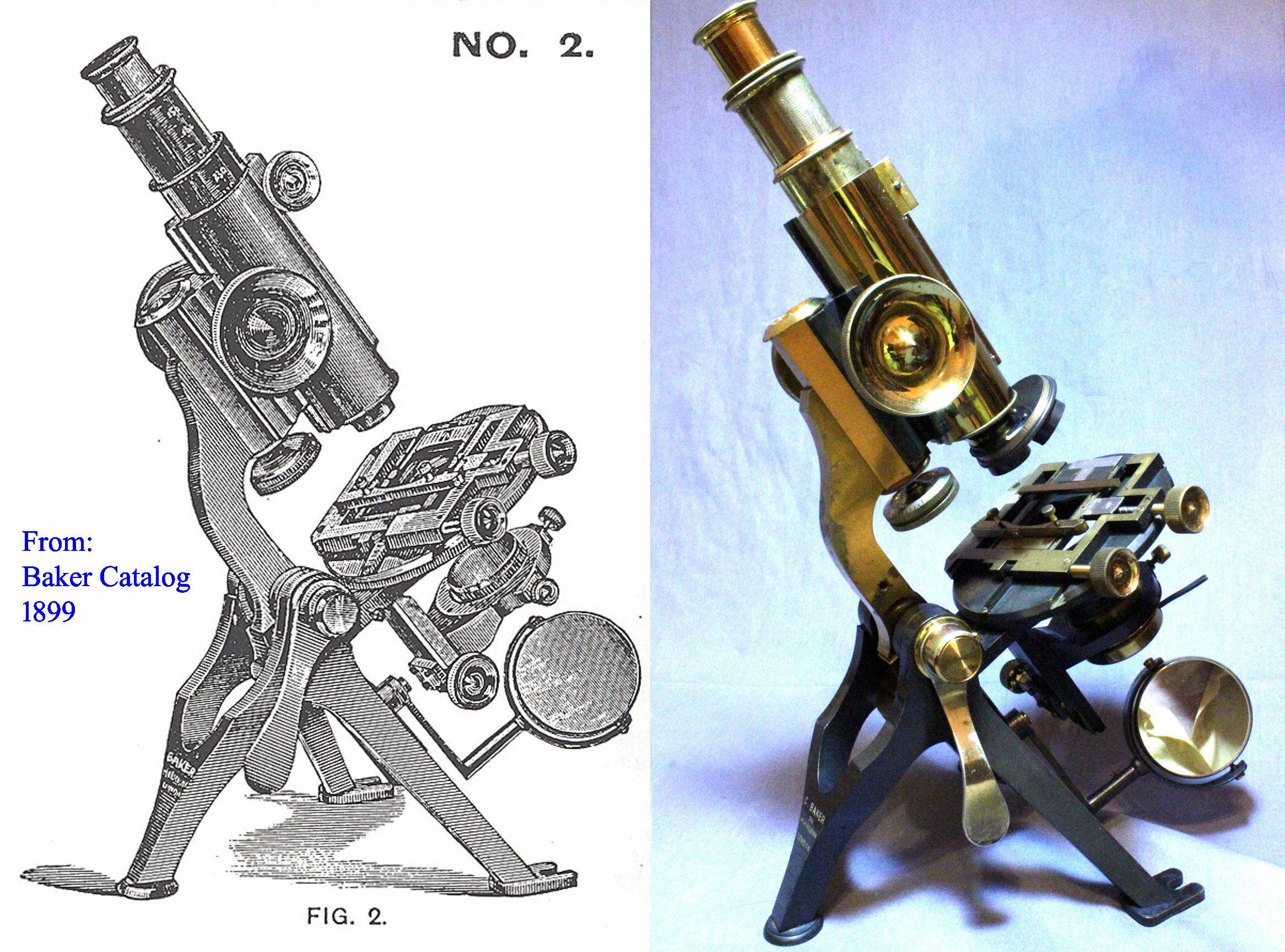HISTORY OF THE NELSON-CURTIES-BAKER MICROSCOPES
This microscope is the final version of the Nelson No. 2 stand, dating to about 1899 and is identical to the one shown in the engraving in the Baker catalog of 1899. For more about its history please see the page dedicated to the History of Microscopes associated with the input of E.M. Nelson, now on a separate web page. An earlier version of this microscope, circa 1895, is also available on this web site. That earlier version has some options that made it much more expensive.
CONDITION:
This fine, large, and heavy microscope is in very fine condition especially considering its c. 120 year old age. As can be seen in the images, it has an attractive mixture of oxidized and lacquered brass finishes. Most of the finish is excellent with minimal scattered losses. The most notable loss of lacquer is on parts of the limb and this is relatively minor, at least to my taste. The nickel inclination-tightening handle has some minor scuffing and its lacquered brass knob has some lacquer losses. The optical tube is really in very good condition a little lacquer loss on the right side just above the nose near the back of the tube. The drawtubes have some scuffs as expected. The mechanical stage has lacquer loss to the top of its moving frame, which now has a pleasant patina; the nickel scales, and arrow pointers are in excellent condition and the lacquer is mostly intact on the slide-holding bars. The silvering of the fine focus knob is quite nice with minor losses. The mirror is excellent on both sides. All mechanical parts of this microscope function normally. All the optical parts appear to be intact. It has a wonderful condenser with removable top element, iris, and swing out filter holder. Other than the replaced handle on the top, the case is original and intact. This microscope will be shipped outside its case so neither is damaged. Shipping will be expensive due to the weight of the instrument and the large size of its shipping container.
